Why?
If autonomous is shaped how people live in Riyadh, how can we develop the better city?
From being a means of moving from one place to another to becoming a social status symbol, there is no doubt that cars became a necessity in the daily lives of the citizens of this city.
According to the Arab News, around 18 million cars are expected to increase by the end of 2018. Alongside with that, an average Arab only takes 3.85 steps per day. This is due to several reasons.
First, Riyadh experiences hot temperature with 45 degrees celsius being the maximum and extreme humidity at around 15% are influential factors as they cause discomfort to the citizens. Second, it has a conservative culture and tradition which can be traced by their religion. Lastly, the planning of the city lacks proximity and density that the only way to buy your daily needs is to use your car. With all of these factors, there is no doubt that people choose to spend extra mile in having cars for it provides them comfort and safety.
What happened after a city design to move by cars?
The increasing traffic congestion along the highways of this city in the middle of the desert, at the same time, with the ongoing climate crisis, it is now time for Riyadh to start changing their ways. From the research, residents in Riyadh waste a total of 88 hours of their lives annually on the streets.
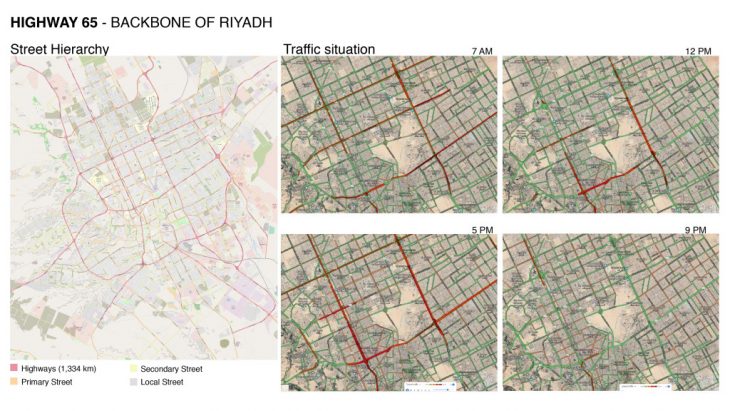
The large number of commuters who use private cars to travel caused the traffic congestion in Riyadh. Consequently, the Riyadh metro began in late 2013. The estimation that metro can absorb 3.6 million passenger/day and the cost approx 22.5 billion dollars. Riyadh residents hope metro will end suffocating traffic jams when it has complete by the end of 2018.
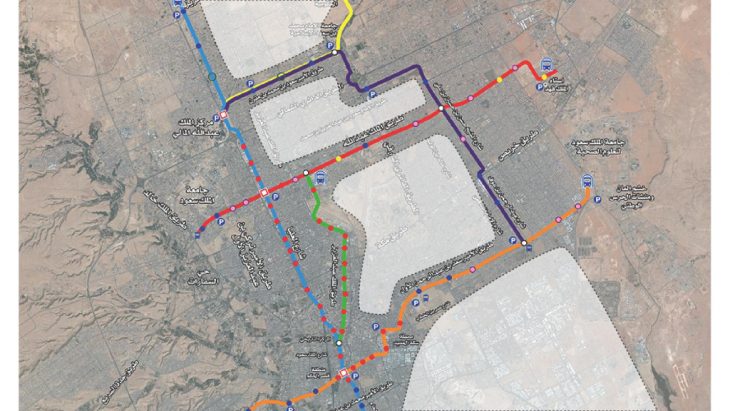
Metro line map of Riyadh
However, we can see from the metro future plan that many areas still hard to access the metro.
The goal of the project is to extend the notion of King Salman Park outside its perimeter to its neighboring areas by multi-scalar strategy. At the same time, it is not to force the citizens of Riyadh to instantly change their ways but to provide better alternatives in which they can freely take part of.
How?
In order to connect the adjacent neighborhoods to this park, the group took the concept of absorption like how a sponge absorbs water. Parking buildings will be strategically placed along the major high-ways which “absorbs” the cars and from these points, people will use a new public transportation, bus or tram, to transfer from one place to another. With this, it is expected to lessen 25,000 cars.
Scaling down and extending even more, the group also took the initiative to redevelop the surrounding areas of the park. Taking one particular area, the goal to encourage people to use other ways of mobility.
Existing Conditions:
Per block has different levels of roads, at the same time, still only accommodating cars. Pedestrian life is lacking. By rearranging the function of each road, it unleashes its fullest potential serving not only cars, but also new possible public transport modes and especially pedestrians.
What?
In order to fully attain these multi-scalar strategy, the group were able to come up with a long-term vision redevelopment starting from the hi-ways down to the local roads.
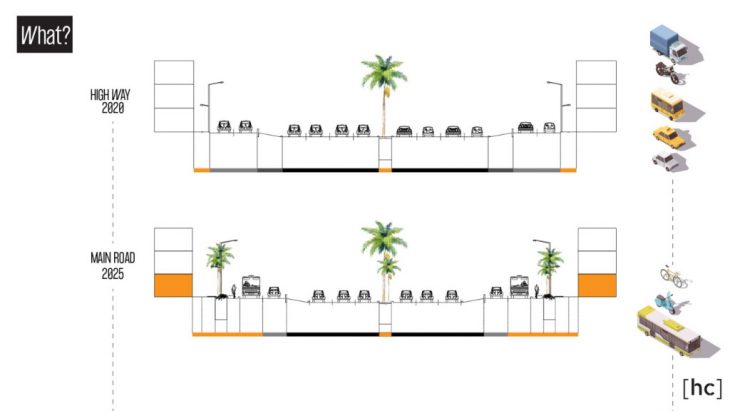
The group envisions sustainability and better alternatives for the citizens of Riyadh. Thus, with the strategy, the hi-way could convert into a main road that accommodates not only cars but also public transportation and pedestrians.
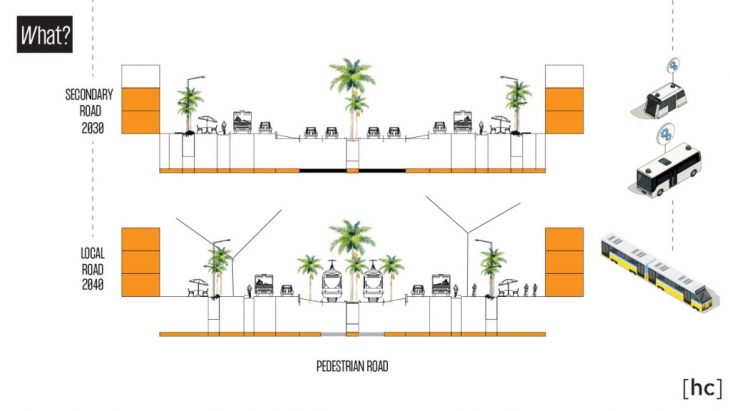
Same with the secondary roads, it could be upgraded into serving more people by replacing cars with trams.
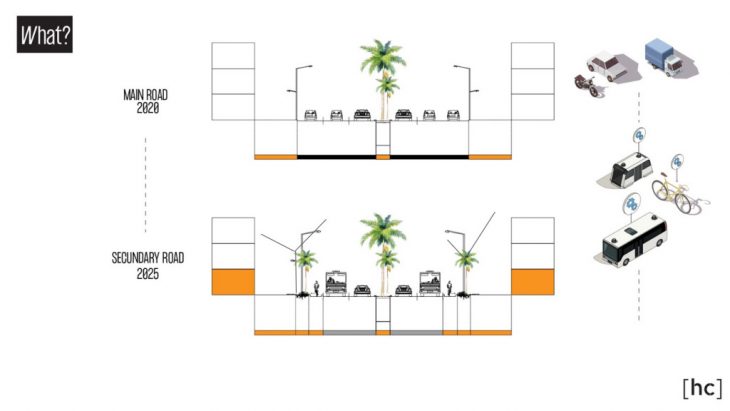
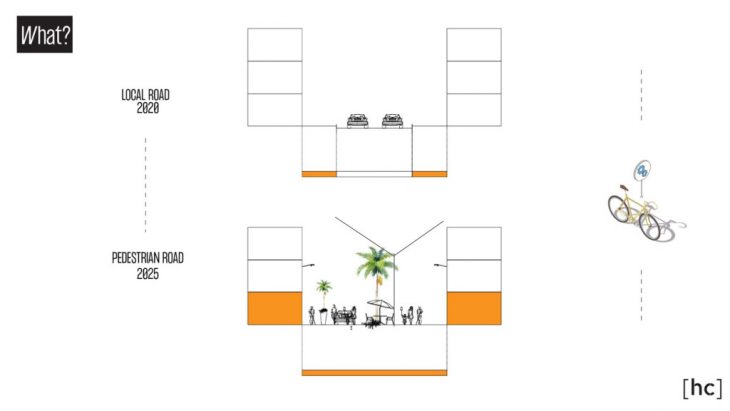
Lastly, from local roads where cars can only use the space to a vibrant pedestrian roads. This gives the people have the opportunity to use these spaces for leisure. At the same time, a safe place to transverse from one point to another.
Riyadh has its own complexity that makes it unique from the rest. Together with the vision of the municipality, it is not impossible to turn this city in a more sustainable and livable city for the citizens.
Riyadh: Capital in the Desert is a project of IaaC, Institute for Advanced Architecture of Catalonia
developed at Master in City & Technology in (2019/2020) by:
Students: Pawitra Bureerak, Byron Cadena, Jianne Libunao
Faculties: PhD Gaia Sgaramella & Giuseppe Vallelonga